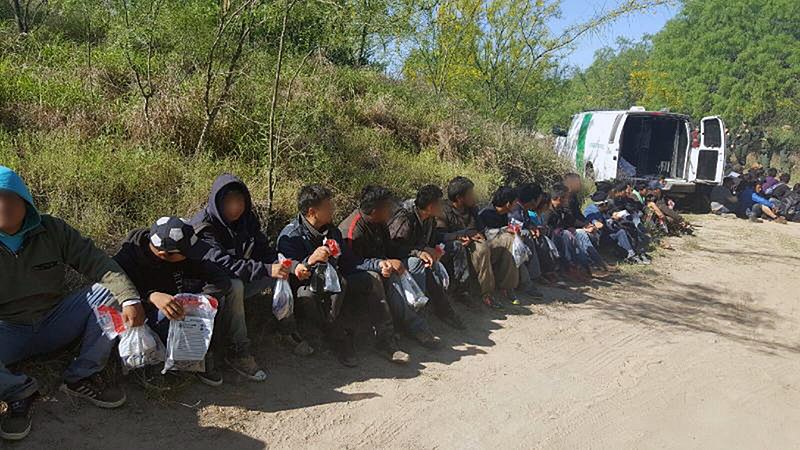- 14 3402-5578
- Rua Hygino Muzy Filho, 737, MARÍLIA - SP
- contato@latinoobservatory.org
 Foto: U.S. Customs and Border Protection
Foto: U.S. Customs and Border Protection
The number of migrants found on the U.S.-Mexico border by the Border Patrol has been higher than the last twenty years, according to available government statistics. The recent influx of migrants on the southwest border was one of the main topics of discussion at recent meetings between Joe Biden and Mexican President Andrés ManuelLópez Obrador.
The number of migrants fell to 16,182, the second lowest total in more than 20 years, in April 2020, shortly after the coronavirus outbreak forced the closure of the southwest border and slowed migration across much of the world.
However, “encounters with migrants at the U.S.-Mexico border have soared since then, with 206,239 reported in November 2022, according to the latest available monthly data from U.S. Customs and Border Protection (CBP), the federal agency that encompasses the Border Patrol. Recent monthly totals far exceed the peak reached during the last major wave of migration at the U.S.-Mexico border in May 2019 and are roughly on par with the previous peak reached in March 2000”, according to Pew Research Center.
In the early months of the COVID-19 pandemic in the United States, the Border Patrol relied heavily on Title 42 to expel most of the migrants who were at the border. Even so, “In November 2022, about two-thirds of all migrant encounters (68%) ended in apprehension under Title 8, while around a third (32%) resulted in expulsion under Title 42”, according to Pew Research.
With the advance of the coronavirus pandemic, there has also been a noticeable shift in the countries of origin of migrants entering the U.S. across the southwest border.
In April 2020, in the first weeks of the coronavirus outbreak in the U.S., people from Mexico and the Northern Triangle countries of El Salvador, Guatemala and Honduras accounted for most people found on the border. But this is no longer the case: in November 2022, the majority of migrants (63%) were from countries other than Mexico and the Northern Triangle region.
“Some of the biggest increases in encounters have involved people from Colombia, Cuba, Nicaragua, Peru and Venezuela. For example, there were only four encounters with Colombian nationals at the U.S.-Mexico border in April 2020. By November 2022, that figure had increased to 15,439. There were even steeper increases in encounters with migrants from Cuba (from 161 encounters in April 2020 to 34,639 in November 2022) and Nicaragua (from 86 to 34,162). The number of encounters involving people from Peru rose from 18 in April 2020 to 8,495 in November 2022. And while the number of encounters with Venezuelans has decreased in recent months, it remains far above the levels recorded in the early months of the pandemic”, according to Pew Research.
When it comes to the demographic profile of
those crossing the border, single adults have been responsible for most of the
recent increase in the approaches. As of November 2022, according to the
publication, 7 out of 10 people were single adults, while much smaller portions
involved families (24%) or unaccompanied minors (6%). Still, the percentage of
meetings involving families increased sharply during the pandemic.











